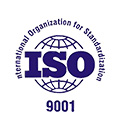How to Write a Good Wire Harness Specification: A Practical Guide for Manufacturers and Engineers

1. Understand the Purpose of the Specification
Before writing begins, clarify why you're creating the specification. Ask:
- Is this for inhouse production or outsourcing to a third party?
- Is the harness for a new application or an upgrade of an existing one?
- Are there industryspecific regulations (e.g., ISO 26262 for automotive, IPC/WHMAA620 for electronics)?
Knowing the enduse and regulatory requirements will shape your documentation.
2. Start with a Clear Overview
Your specification should begin with a Project Overview or Executive Summary. This section includes:
- Project name and version control
- Harness application (e.g., “Main battery cable for electric scooter”)
- Target production quantities
- Operating environment (temperature, vibration, moisture, chemical exposure)
This sets the context for everything that follows.
3. Define Electrical Requirements
Electrical characteristics are the backbone of the wire harness design. Include:
- Voltage Rating (e.g., 12V DC, 48V EV systems)
- Current Capacity (Amps per conductor)
- Signal Type (power, data, CAN bus, RF, analog)
- Shielding/EMI Requirements (especially for medical, military, or automotive use)
- Insulation Resistance and Dielectric Strength
These parameters determine conductor size, insulation material, and shielding design.
4. Provide Mechanical and Environmental Requirements
Clearly state physical and environmental tolerances:
- Temperature Range (e.g., 40°C to +125°C)
- Flexibility and Bend Radius
- Resistance to Water/Dust (IP Rating)
- Chemical Resistance (fuel, oil, solvents)
- Vibration and Shock Tolerance
- UV Resistance (especially for outdoor or automotive applications)
This section ensures longterm durability and product safety.
5. Detailed Material Specification
List approved materials for each component:
- Wires: gauge, insulation type (e.g., PVC, XLPE), color code
- Connectors: brand, part number, gender, mating cycles
- Terminals: crimp vs. solder, plating type
- Sleeving and Tapes: braided sleeving, heat shrink tubing, adhesive or nonadhesive tapes
- Labels and Markings: method (thermal transfer, laser), placement
Where possible, include manufacturer part numbers and spec sheets.
6. Schematic Diagrams and Wire Lists
Use electrical schematics and wiring diagrams to visually represent:
- Pointtopoint connections
- Wire labels or numbers
- Splices or junctions
- Ground and power locations
並搭配導線表進行整理:
| Wire No. | From | To | Wire Gauge | Color | Length (mm) | Function |
| W1 | P1 | J2 | 18 AWG | Red | 300 | Power |
Clear diagrams and tables reduce misinterpretation during production.
7. Assembly Instructions and Routing
Include detailed guidance on:
- Routing paths through enclosures or chassis
- Branchout points and strain reliefs
- Twisting, bundling, and taping methods
- Bend radius and minimum slack
- Installation orientation (topdown, leftright, etc.)
If space allows, include photographs or 3D renderings of the final assembly.
8. Testing and Quality Requirements
Specify test protocols for verifying the harness meets quality standards:
- Continuity Testing
- HiPot/Dielectric Withstand Testing
- Insulation Resistance Testing
- Pull/Retention Force Testing
- Dimensional Inspection
Reference standards like IPC/WHMAA620 for acceptable workmanship criteria.
9. Compliance and Regulatory Standards
Make note of any certification or industry requirements:
- UL, CSA, RoHS, REACH, CE
- IPC/WHMAA620 Class 2 or 3
- ISO 9001 or IATF 16949 quality systems
- MILSTD or SAE standards for defense/automotive
This ensures both safety and marketability.
10. Revision Control and Documentation Protocols
Every spec document should include:
- Revision history (version numbers, dates, changes made)
- Approval Signatures
- Reference documents or datasheets
- Bill of Materials (BOM)
- Packaging and labeling requirements
Use proper document management systems to control distribution and updates.
11. Supplier and Manufacturing Notes
If the harness is to be outsourced:
- Indicate preferred suppliers
- Define MOQ (minimum order quantity) and lead time expectations
- Include warranty terms or quality inspection procedures
- Provide SOPs (Standard Operating Procedures) or training requirements
12. Appendices and Reference Materials
A robust spec often includes appendices:
- Glossary of Terms
- Wire Color Codes
- Connector Mating Charts
- Torque Specifications
- CAD drawings or STEP files
The more reference materials you provide, the better your harness will be interpreted and built.
A good wire harness specification bridges the gap between design and production. By clearly detailing technical, mechanical, and quality requirements, you not only streamline manufacturing but also reduce errors, returns, and warranty claims. Whether you're an OEM engineer or a supplier, investing time in a thorough wire harness specification pays longterm dividends in product reliability and customer satisfaction.










